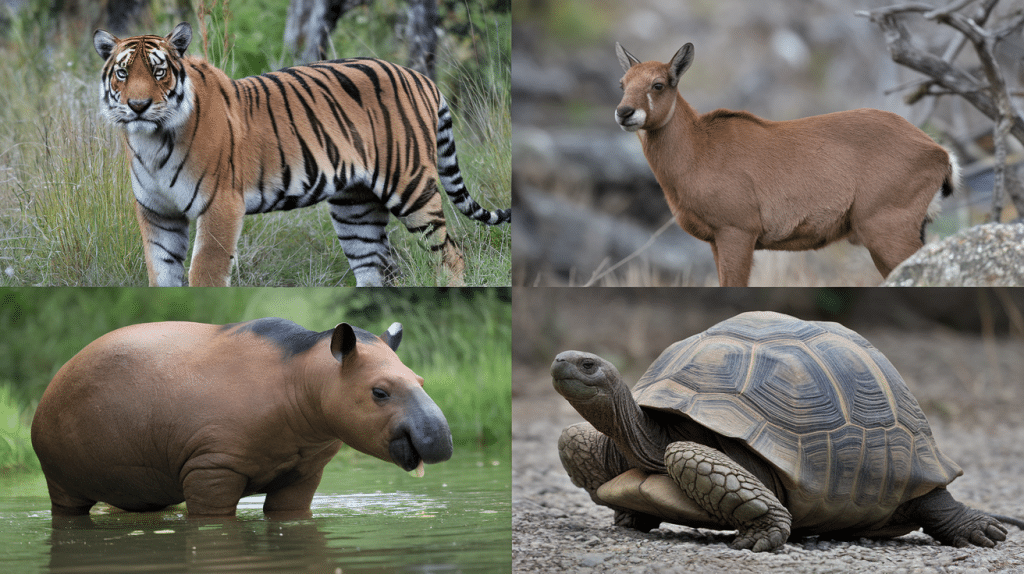Now Reading: 200 Animals that Start with T: Complete List with Fun Facts
-
01
200 Animals that Start with T: Complete List with Fun Facts

200 Animals that Start with T: Complete List with Fun Facts
Tigers aren’t the only wonderful animals whose names start with T. From tiny tree frogs to towering tapirs, T-named animals fill every corner of our planet.
Want to know which T-animal can survive being frozen solid?
Or which one has teeth in its stomach? These creatures will surprise you with their strange abilities and survival skills.
In this blog, we’ll explore a variety of animals that start with “T,” from the well-known tiger to the lesser-known tapir. You’ll learn fun facts about their habitats, behaviours, and unique traits.
By the end of this read, you’ll not only learn about these wonderful animals but also gain a deeper appreciation for the diversity of wildlife on our planet.
Let’s get into the world of “T” animals!
Land & Marine Animals
1. Tiger
Tigers are the largest wild cats, known for their striking orange fur with black stripes.
They are powerful hunters, primarily relying on stealth to catch prey.
Tigers are solitary animals and often establish large territories.
- Origin: Native to Asia.
- Habitat: Dense forests, grasslands, and mangrove swamps.
- Scientific name: Panthera tigris
- Fun Facts: A tiger’s roar can be heard up to 2 miles away. Each tiger’s stripes are unique, similar to human fingerprints.
2. Tortoise

Tortoises are slow-moving reptiles with a hard, protective shell.
They are known for their long lifespan, often living for several decades.
Tortoises spend much of their time on land, where they graze on vegetation.
- Origin: Found worldwide, particularly in desert and tropical regions.
- Habitat: Dry, desert areas and grasslands.
- Scientific name: Testudines (order)
- Fun Facts: Tortoises can live for over 100 years. Some species can hold their breath for hours underwater.
3. Tapir
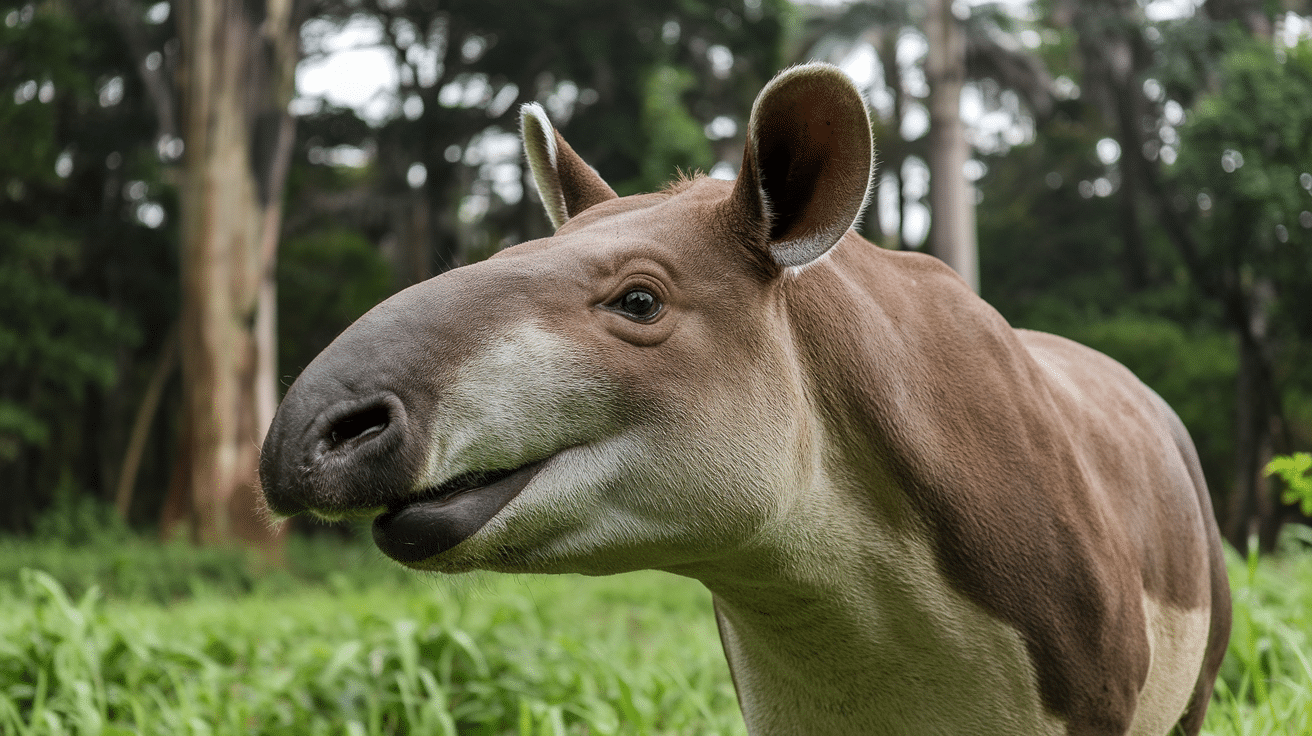
Tapirs are large, herbivorous mammals with a prehensile snout.
They are excellent swimmers and use their long noses to grasp branches and feed.
Despite their size, tapirs are elusive animals and tend to be solitary.
- Origin: Native to Central and South America, and Southeast Asia.
- Habitat: Tropical forests and wetlands.
- Scientific name: Tapirus (genus)
- Fun Facts: Tapirs are known for their excellent swimming abilities and can hold their breath underwater for several minutes.
4. Tiger Shark
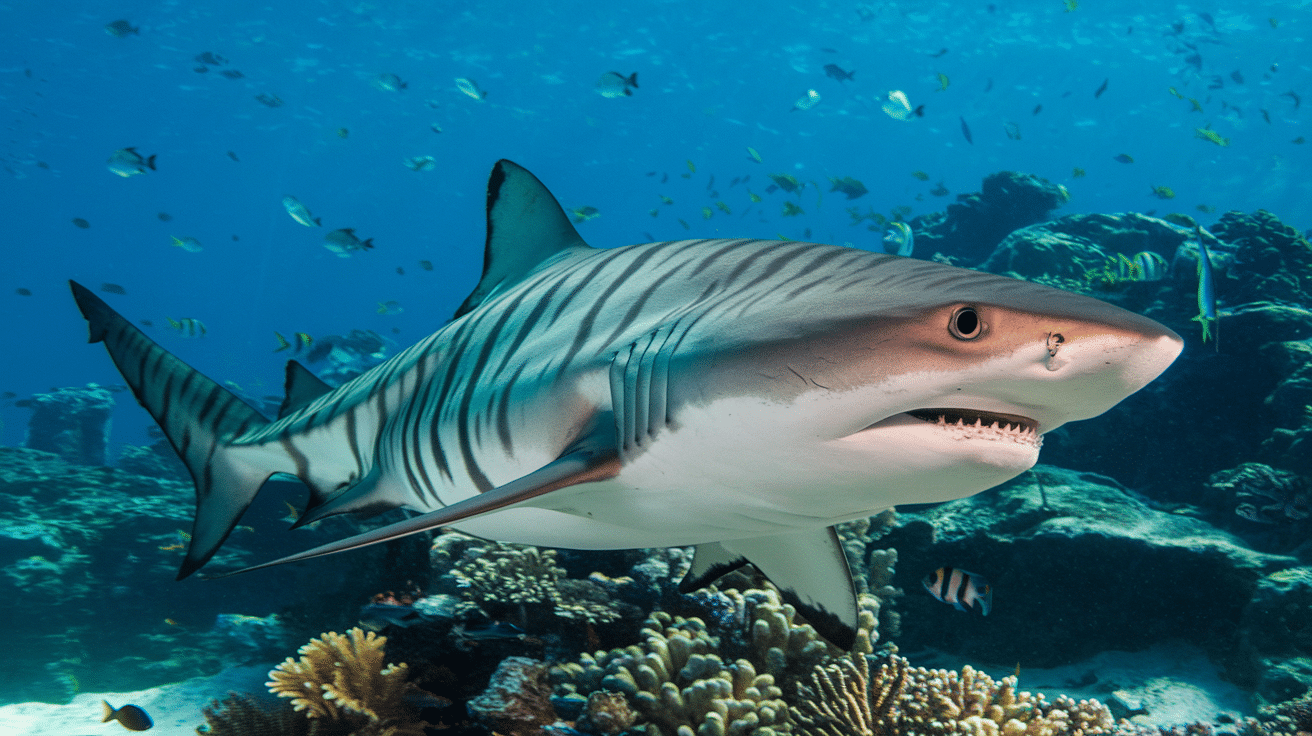
Tiger sharks are large, predatory sharks known for their distinctive tiger-like stripes.
They are opportunistic feeders, eating a wide range of prey, including fish, birds, and even other sharks.
Tiger sharks are solitary and mostly hunt at night.
- Origin: Found in tropical and subtropical oceans.
- Habitat: Coastal waters, shallow reefs, and open seas.
- Scientific name: Galeocerdo cuvier
- Fun Facts: Tiger sharks are sometimes referred to as “garbage cans of the ocean” due to their wide-ranging diet. They can grow up to 16 feet long.
5. Tarantula
Tarantulas are large, hairy spiders known for their impressive size and potent venom.
They are typically slow-moving and rely on their strong legs to catch prey.
Despite their fearsome appearance, they are generally not aggressive towards humans.
- Origin: Native to Africa, Asia, and the Americas.
- Habitat: Deserts, grasslands, and rainforests.
- Scientific name: Theraphosidae (family)
- Fun Facts: Tarantulas can live for up to 30 years in captivity. Their venom is generally harmless to humans but can cause discomfort.
6. Tasmanian Devil

Tasmanian devils are carnivorous marsupials known for their loud screeches and aggressive behavior when feeding.
They have a stocky build with powerful jaws capable of crushing bone.
Despite their small size, they are the top scavengers in their environment.
- Origin: Native to Tasmania, Australia.
- Habitat: Forests, woodlands, and coastal heathlands.
- Scientific name: Sarcophilus harrisii
- Fun Facts: Tasmanian devils are known for their voracious appetite, capable of eating up to 40% of their body weight in one meal.
7. Tuna
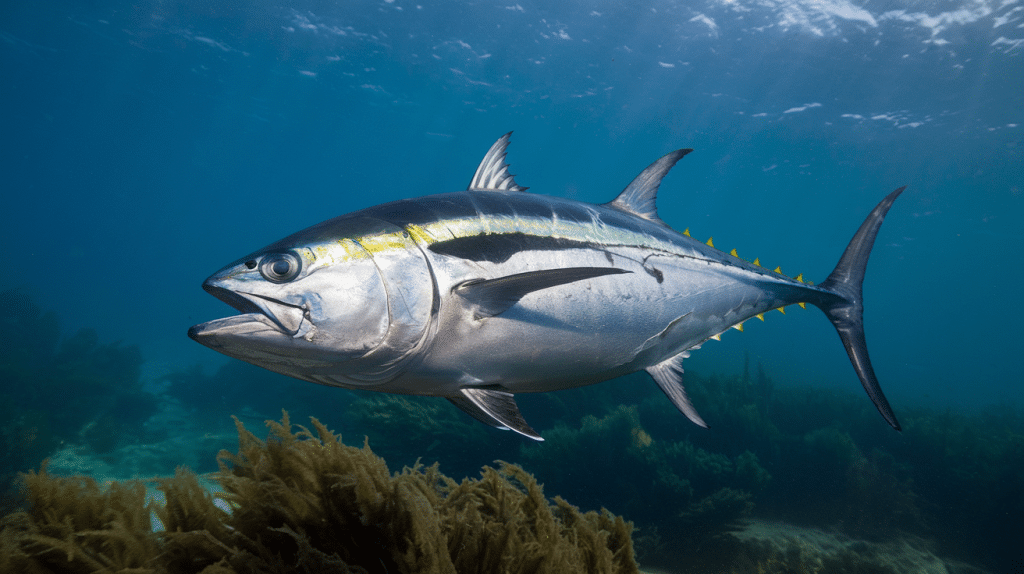
Tuna are large, fast-swimming fish known for their streamlined bodies and high economic value.
They are migratory and can swim great distances in search of food.
Tuna are highly prized in the fishing industry, especially for sushi.
- Origin: Found in the Atlantic, Pacific, and Indian Oceans.
- Habitat: Open ocean, particularly in warm, temperate waters.
- Scientific name: Thunnus (genus)
- Fun Facts: Tuna can swim at speeds up to 75 km/h. They are capable of migrating across entire oceans.
8. Tortoise Beetle
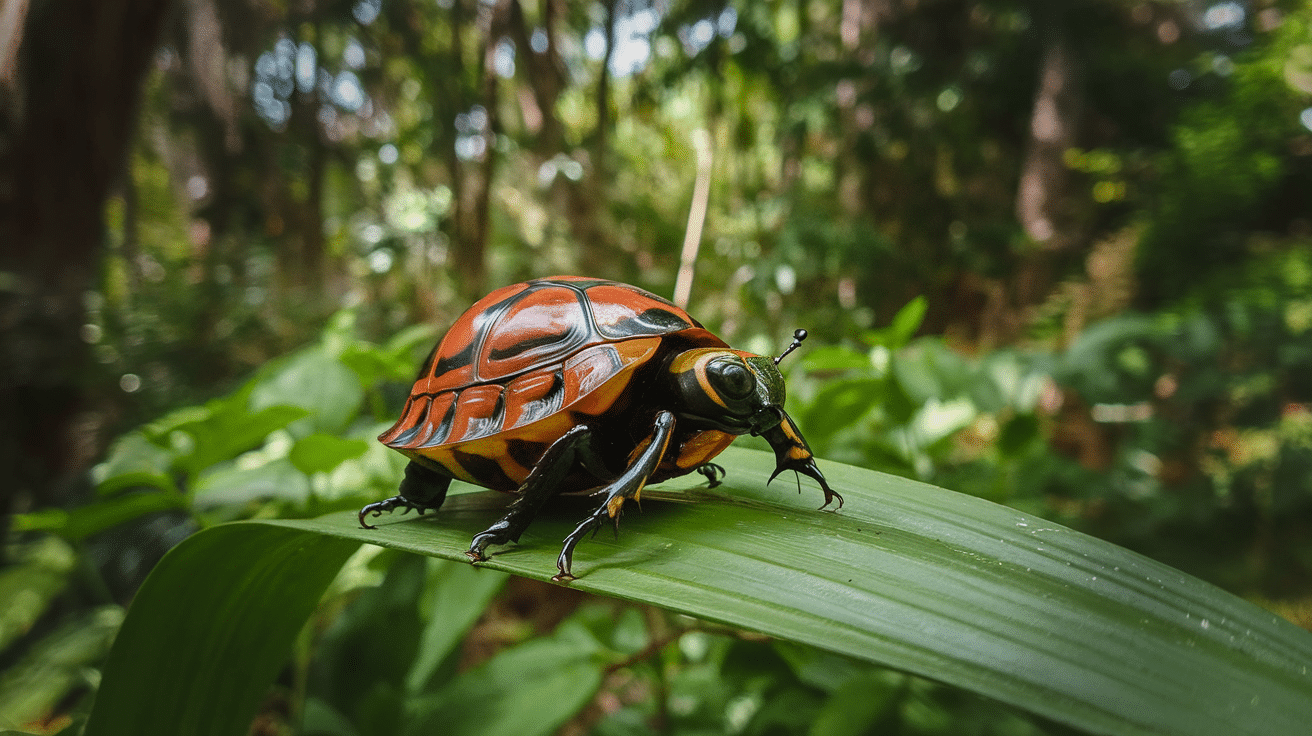
Tortoise beetles are small, colorful beetles named for their domed shells, which resemble the shape of a tortoise’s shell.
These beetles feed primarily on plants, especially leaves.
They can often be found in tropical and temperate climates.
- Origin: Found worldwide, particularly in warm climates.
- Habitat: Woodlands, gardens, and tropical areas.
- Scientific name: Cassidinae (subfamily)
- Fun Facts: Tortoise beetles have the unique ability to secrete a foul-smelling substance as a defence mechanism.
9. Tahr
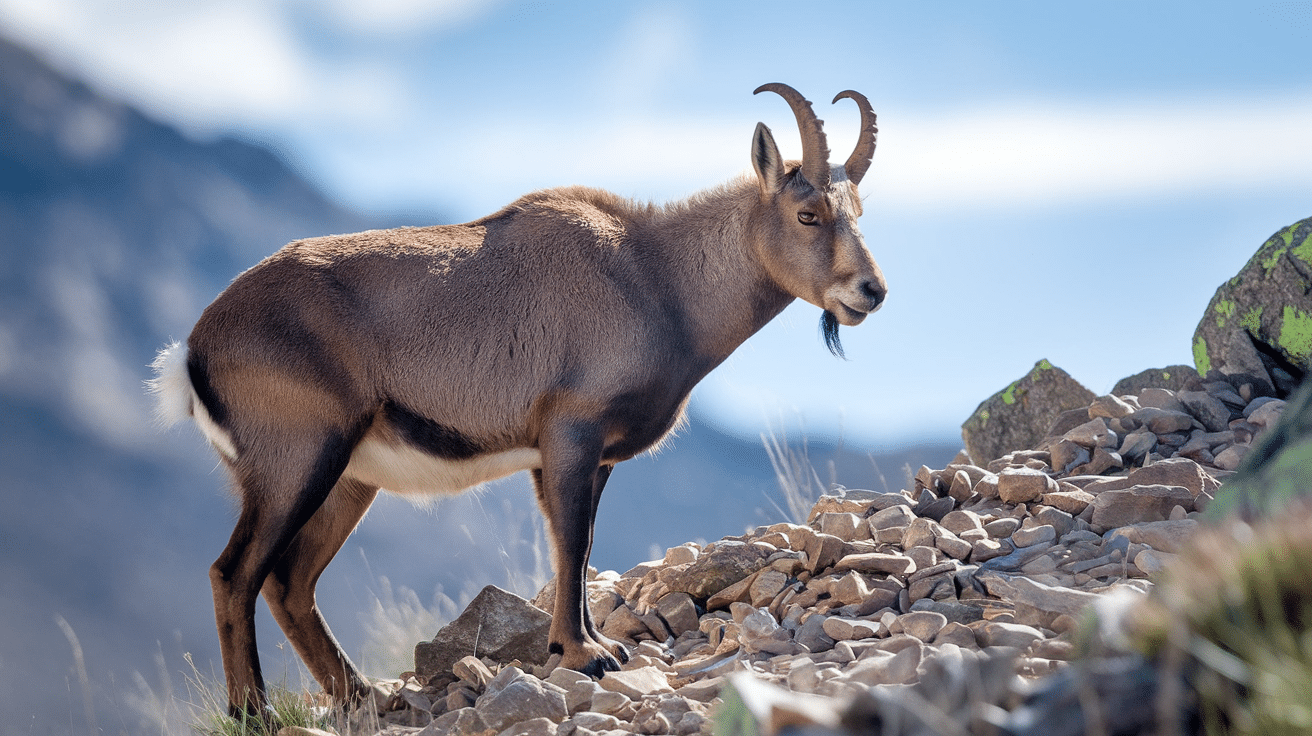
Tahr are large herbivores with thick fur and curved horns, closely related to goats.
They are excellent climbers, often found in rocky, mountainous terrains.
Tahrs are typically shy and spend most of their time in the high altitudes of the mountains.
- Origin: Native to the Himalayas and parts of Africa.
- Habitat: Mountainous areas, rocky slopes, and grasslands.
- Scientific name: Hemitragus (genus)
- Fun Facts: Tahrs are highly spry and able to scale steep rock faces with ease. They have been introduced to various regions outside their native habitat.
10. Turkey
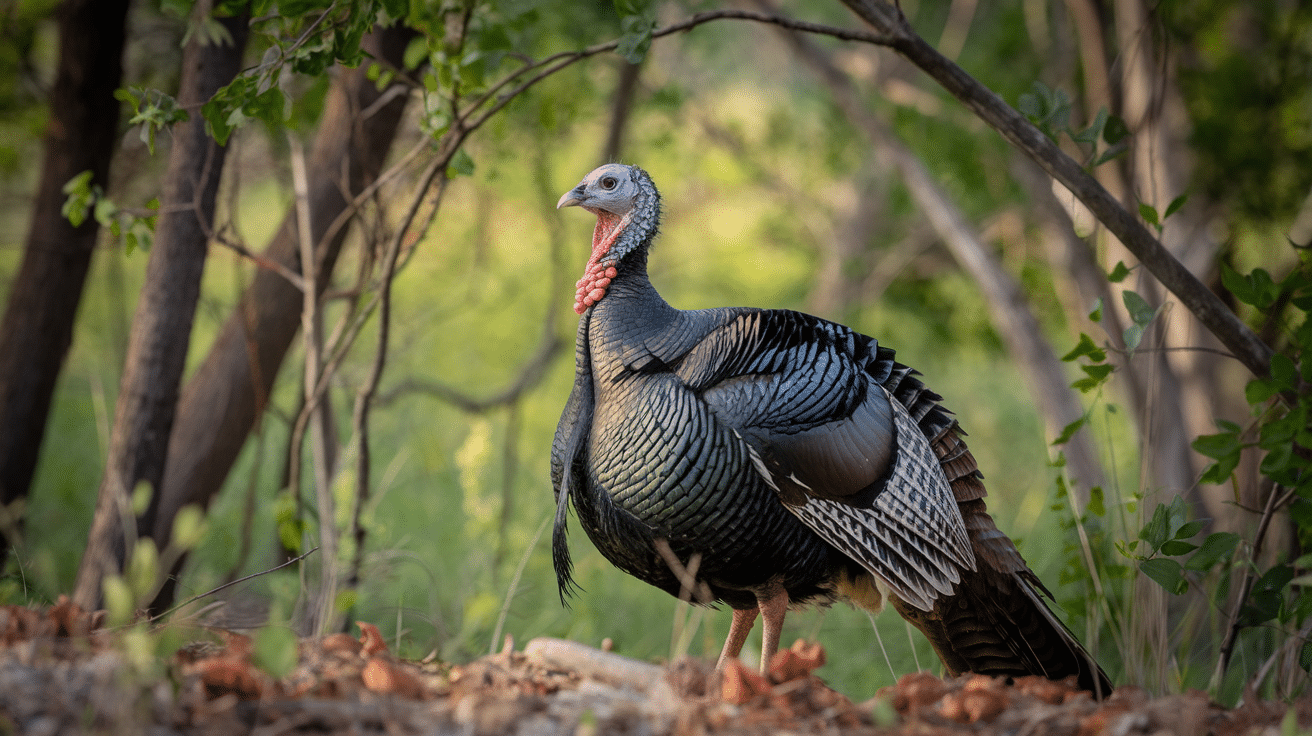
Turkeys are large, ground-dwelling birds known for their distinctive fan-shaped tail and fleshy wattle.
They are omnivorous, feeding on a variety of plants and insects.
Wild turkeys are capable fliers, although domestic turkeys are typically heavier and unable to fly.
- Origin: Native to North America.
- Habitat: Forests, grasslands, and farmlands.
- Scientific name: Meleagris gallopavo
- Fun Facts: Turkeys can run at speeds of up to 20 miles per hour. They can fly at speeds of up to 55 miles per hour for short distances.
11. Thomson’s Gazelle
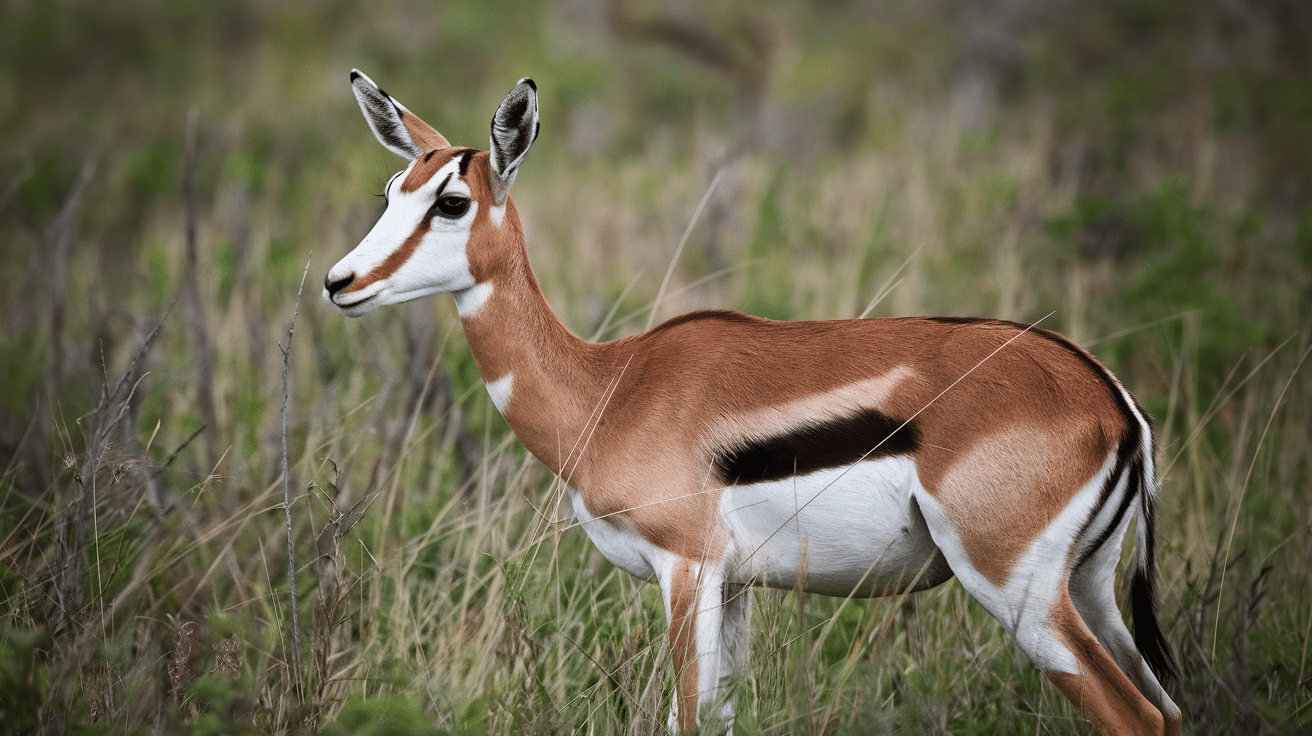
Thomson’s gazelles are small, spry antelopes known for their speed and graceful movements.
They are herbivores, feeding on grasses and leaves.
These gazelles are often seen in large herds, offering protection from predators.
- Origin: Native to East Africa.
- Habitat: Grasslands, savannas, and open woodlands.
- Scientific name: Eudorcas thomsonii
- Fun Facts: Thomson’s gazelles are among the fastest animals on land, capable of reaching speeds of up to 50 miles per hour. They often leap in the air to avoid predators, a behavior called “pronking.”
12. Trout
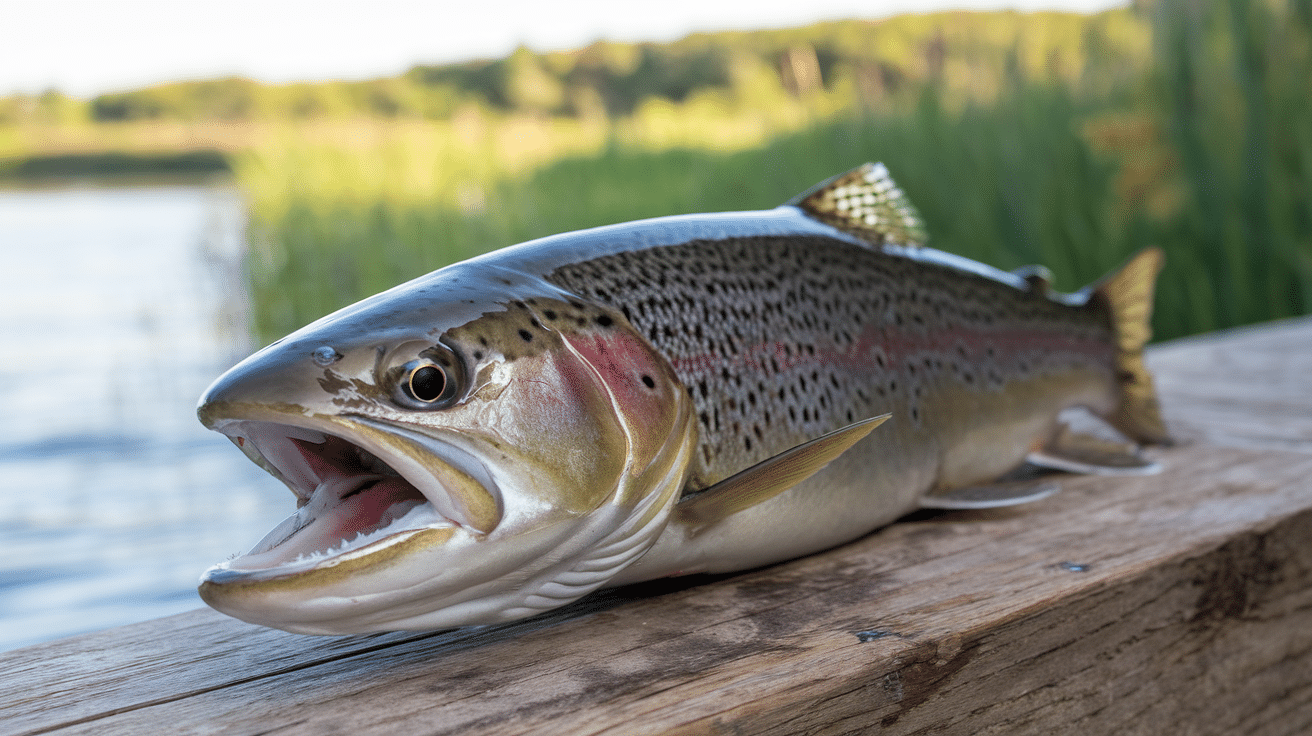
Trout are freshwater fish known for their speckled bodies and vibrant colors.
They are typically found in cold, clean streams and rivers, where they feed on insects, small fish, and crustaceans.
Trout are popular with both anglers and chefs due to their graceful flavour.
- Origin: Native to North America, Europe, and parts of Asia.
- Habitat: Freshwater rivers, lakes, and streams.
- Scientific name: Oncorhynchus (genus)
- Fun Facts: Trout are capable of migrating over long distances. Some species, like the rainbow trout, can live up to 11 years in the wild.
13. Tree Frog
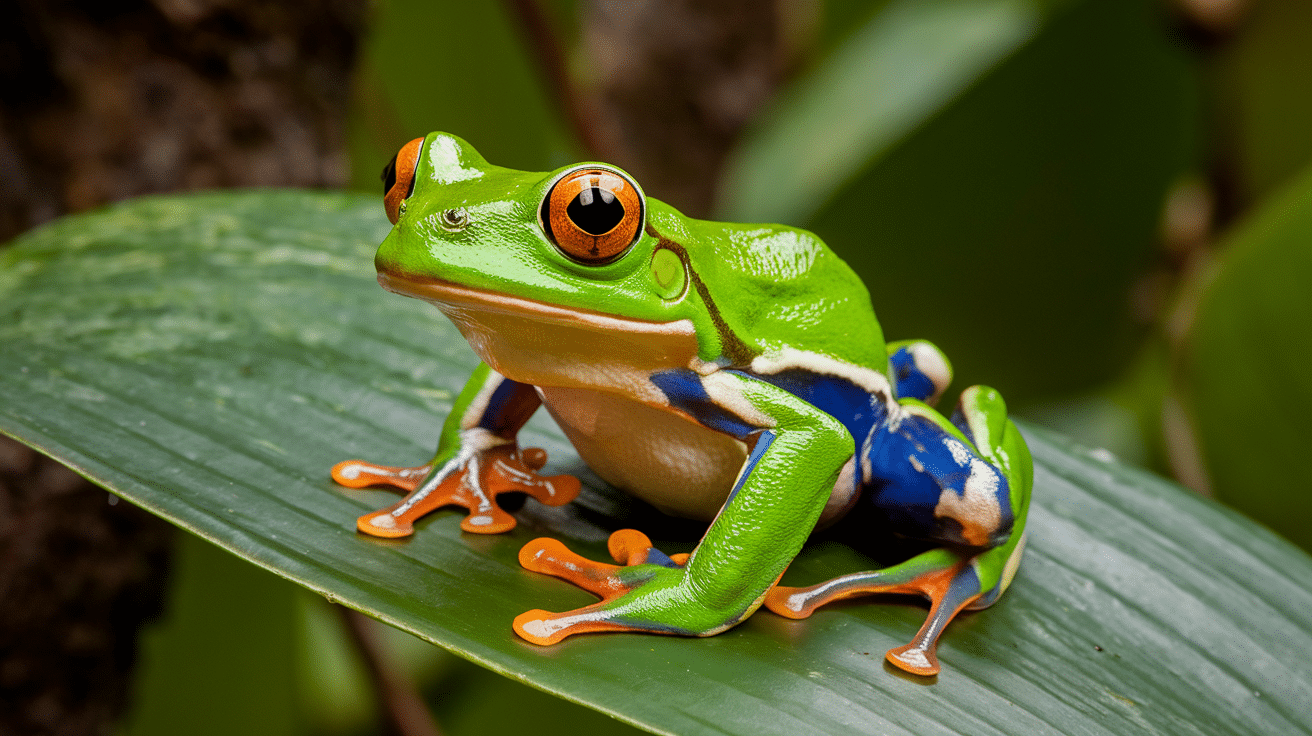
Tree frogs are small amphibians known for their ability to climb trees and other vertical surfaces.
They have specialized toe pads that allow them to grip and climb easily.
Tree frogs are typically found in tropical and temperate climates.
- Origin: Found worldwide, especially in tropical regions.
- Habitat: Rainforests, swamps, and marshes.
- Scientific name: Hyla (genus)
- Fun Facts: Some tree frogs can change color to blend into their surroundings. They are also known for their distinctive, loud croaks that they use for communication.
14. Tamarin
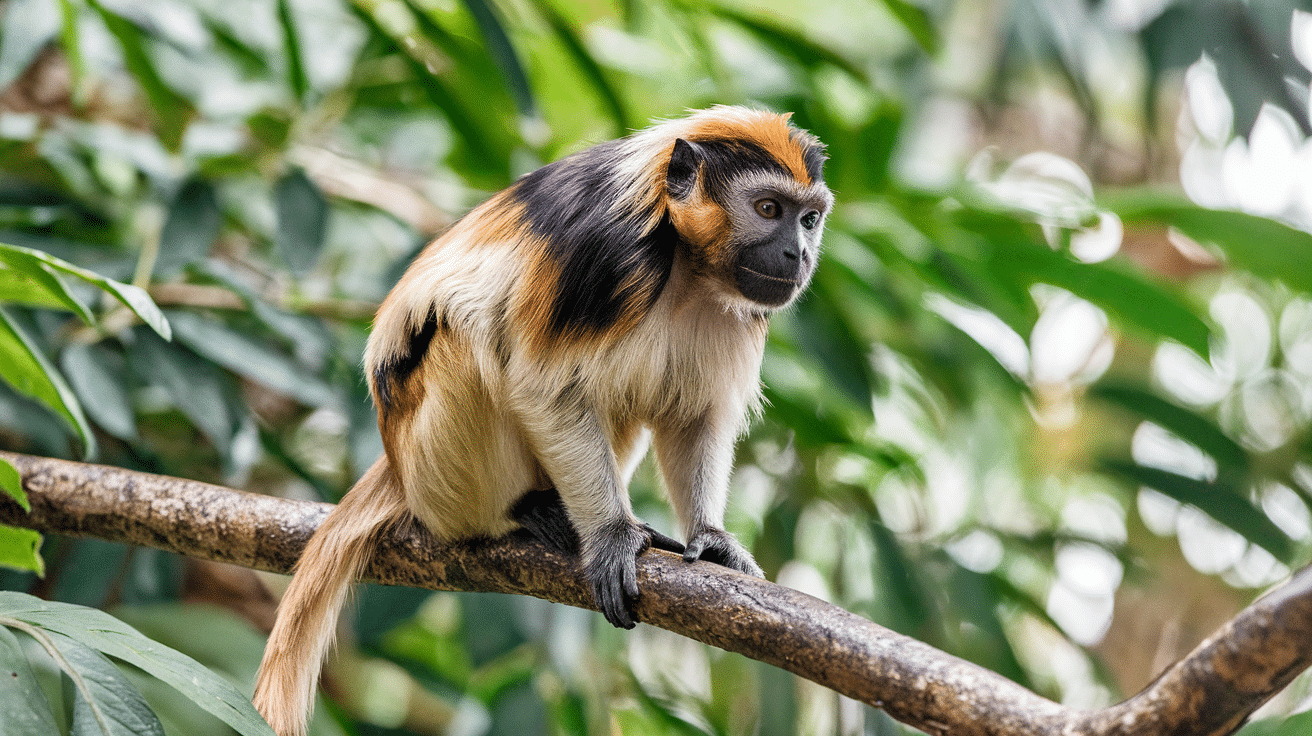
Tamarins are small, New World monkeys known for their long, bushy tails and expressive faces.
They live in groups and communicate using high-pitched sounds.
Tamarins are omnivores, eating fruits, insects, and small vertebrates.
- Origin: Native to Central and South America.
- Habitat: Tropical rainforests.
- Scientific name: Saguinus (genus)
- Fun Facts: Tamarins are known for their social behaviour, often seen grooming one another. They have specialized claws for climbing and gripping tree branches.
15. Tsetse Fly
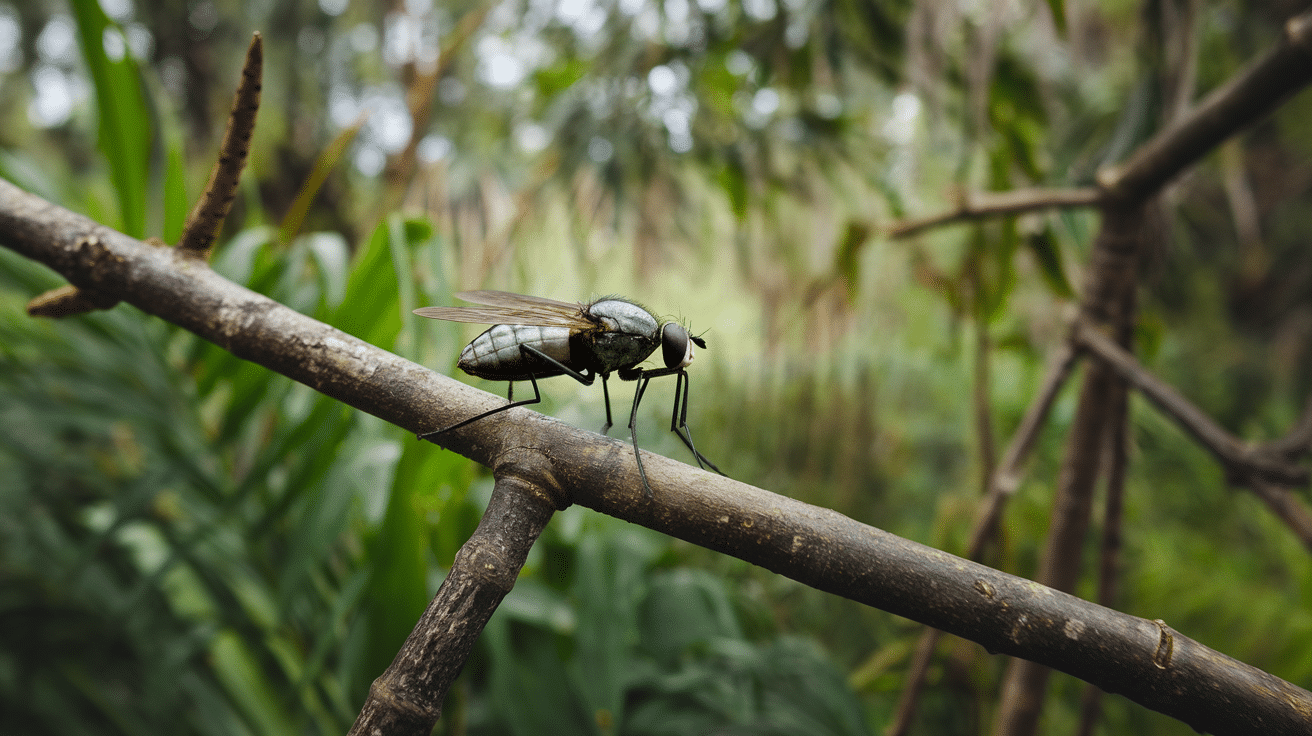
Tsetse flies are large biting flies that are known for spreading diseases like sleeping sickness in humans and animals.
They are attracted to movement and carbon dioxide.
These flies have a unique biting mechanism that enables them to feed on the blood of mammals.
- Origin: Native to sub-Saharan Africa.
- Habitat: Savannas, woodlands, and areas with dense vegetation.
- Scientific name: Glossina (genus)
- Fun Facts: Tsetse flies are responsible for transmitting trypanosomiasis, also known as sleeping sickness. They are able to fly for several hours in search of prey.
16. Tuatara
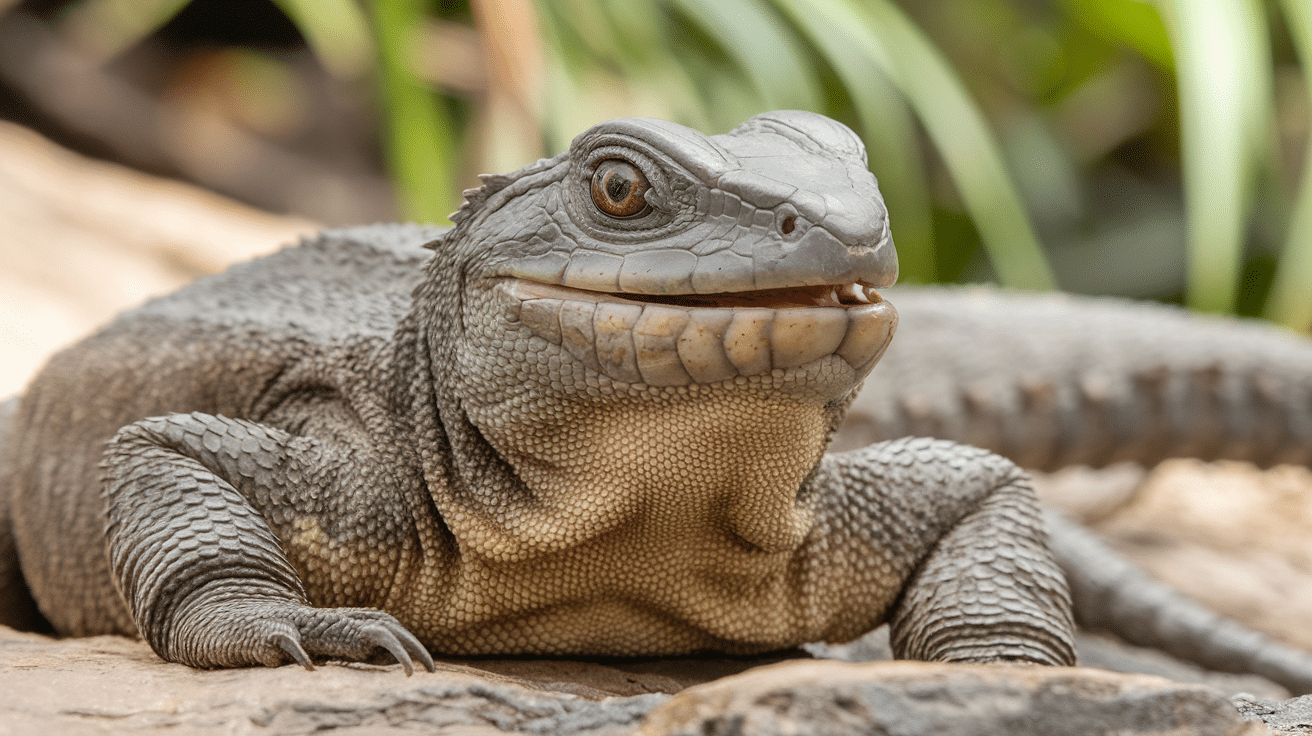
Tuataras are reptiles with a unique third eye located on the top of their heads.
They are slow-moving creatures that mainly eat insects, small lizards, and birds.
Tuataras have remained relatively unchanged for millions of years.
- Origin: Native to New Zealand.
- Habitat: Forests, grasslands, and coastal areas.
- Scientific name: Sphenodon punctatus
- Fun Facts: Tuataras are often called “living fossils” because they are the only surviving species of the order Rhynchocephalia. They can live up to 100 years.
17. Tiger Salamander
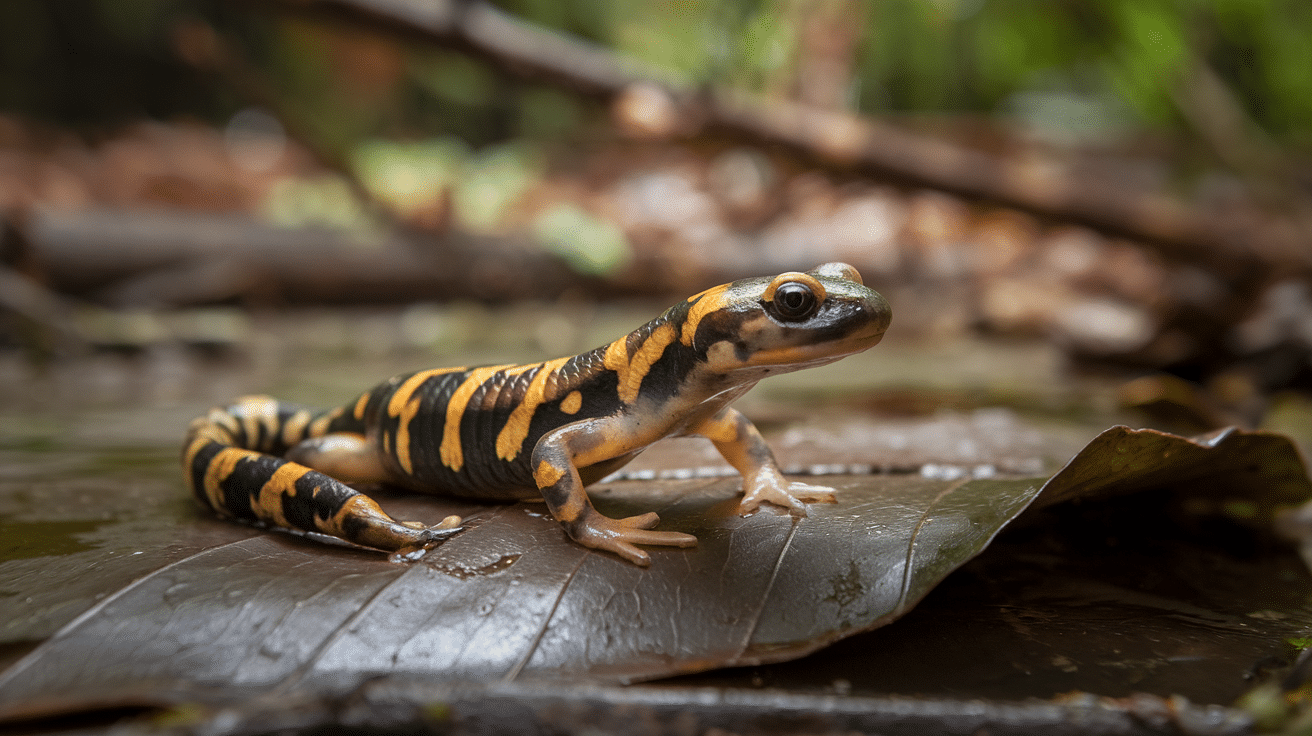
Tiger salamanders are large amphibians with a striking pattern of yellow or white markings on a black body.
They are burrowing animals, spending much of their time underground, and emerge mainly during wet conditions.
These salamanders are carnivorous, feeding on insects, worms, and small invertebrates.
- Origin: Native to North America.
- Habitat: Forests, grasslands, and wetlands.
- Scientific name: Ambystoma tigrinum
- Fun Facts: Tiger salamanders are known for their ability to regenerate limbs, spinal cord, and other organs. They can live for up to 16 years in the wild.
18. Tree Kangaroo
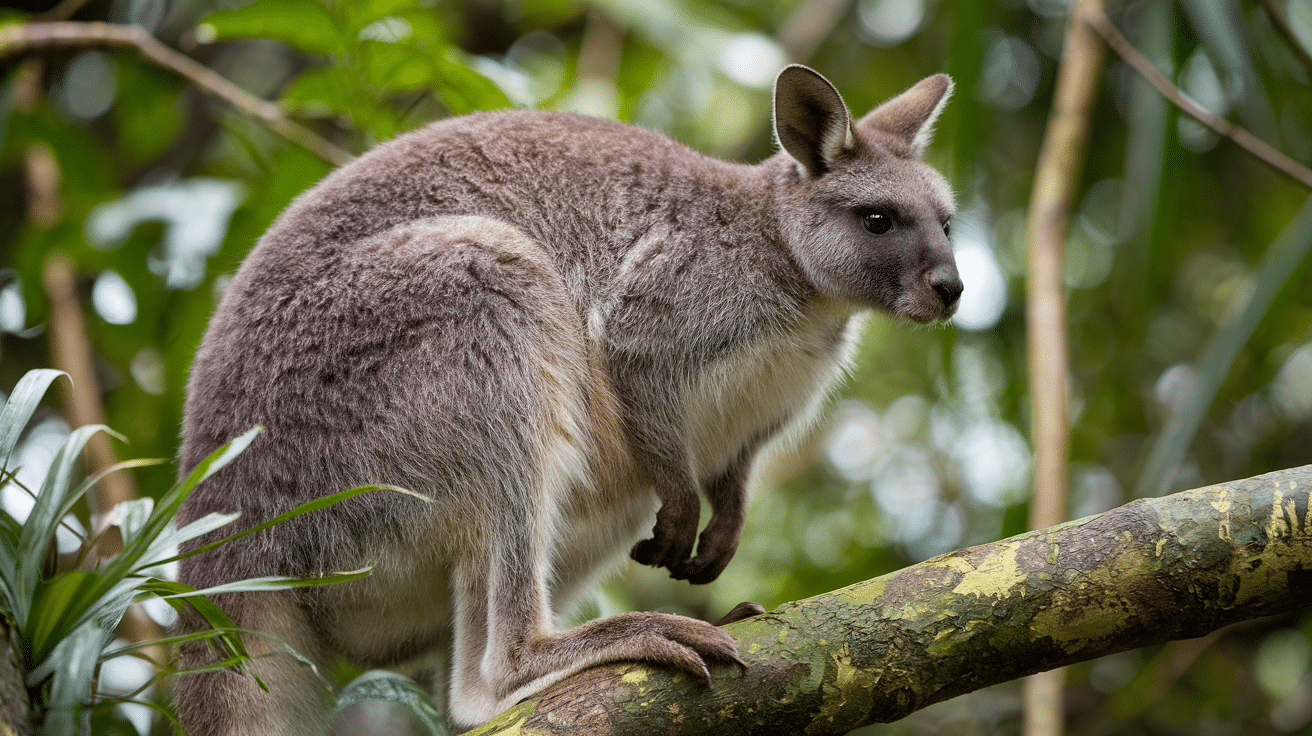
Tree kangaroos are a unique species of kangaroo that spends most of their time in trees rather than on the ground.
They have strong, muscular arms and large tails, which help them balance as they steer through the forest canopy.
Tree kangaroos are herbivores, feeding on leaves, fruits, and flowers.
- Origin: Native to the rainforests of New Guinea and northern Australia.
- Habitat: Rainforests and tropical woodlands.
- Scientific name: Dendrolagus (genus)
- Fun Facts: Tree kangaroos are excellent climbers and can leap from tree to tree. They are rarely seen on the ground and are solitary animals.
19. Tungara Frog
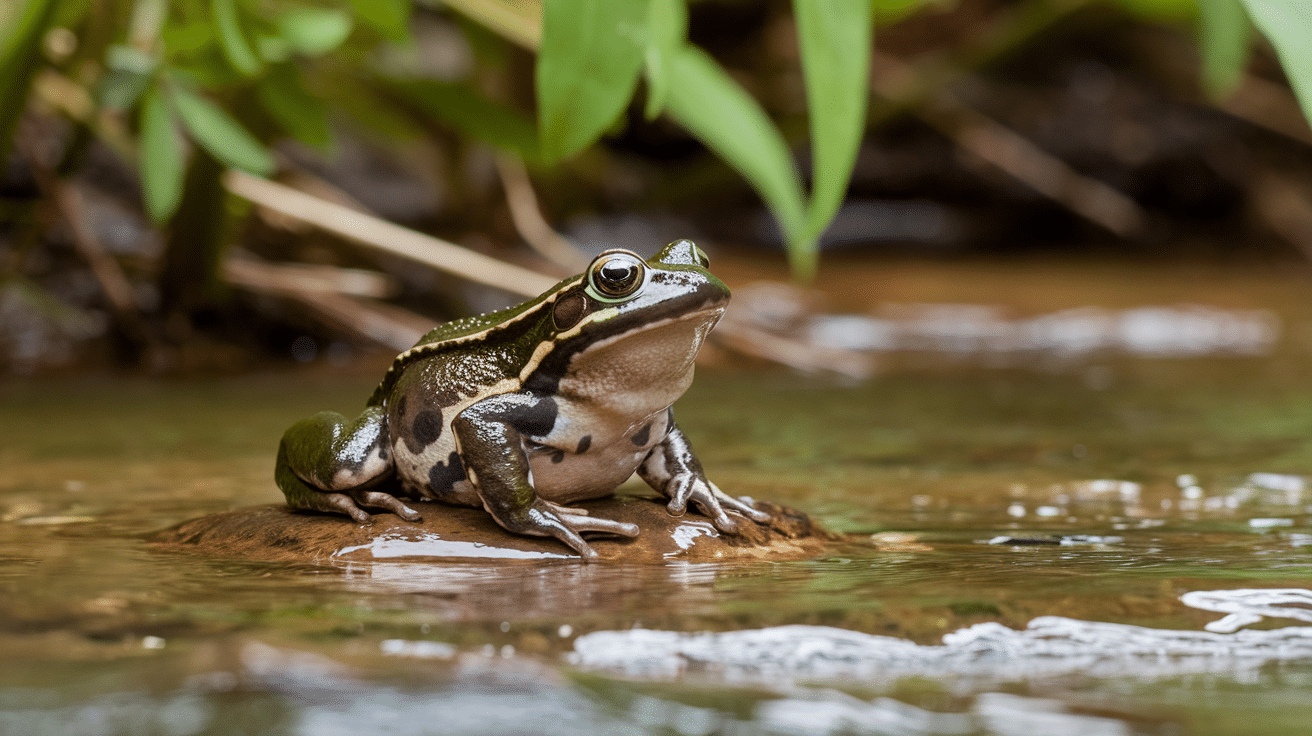
Tungara frogs are small, nocturnal frogs known for their distinctive mating calls, which sound like a series of “whistles” followed by a “chuck.”
They are typically found in slow-moving water and muddy areas.
The males produce loud calls to attract females, often attracting both mates and predators.
- Origin: Native to Central and South America.
- Habitat: Ponds, swamps, and marshes.
- Scientific name: Engystomops pustulosus
- Fun Facts: Tungara frogs are known for their ability to attract both mates and predators with their calls. Some species can change their calls based on environmental conditions.
20. Toadfish
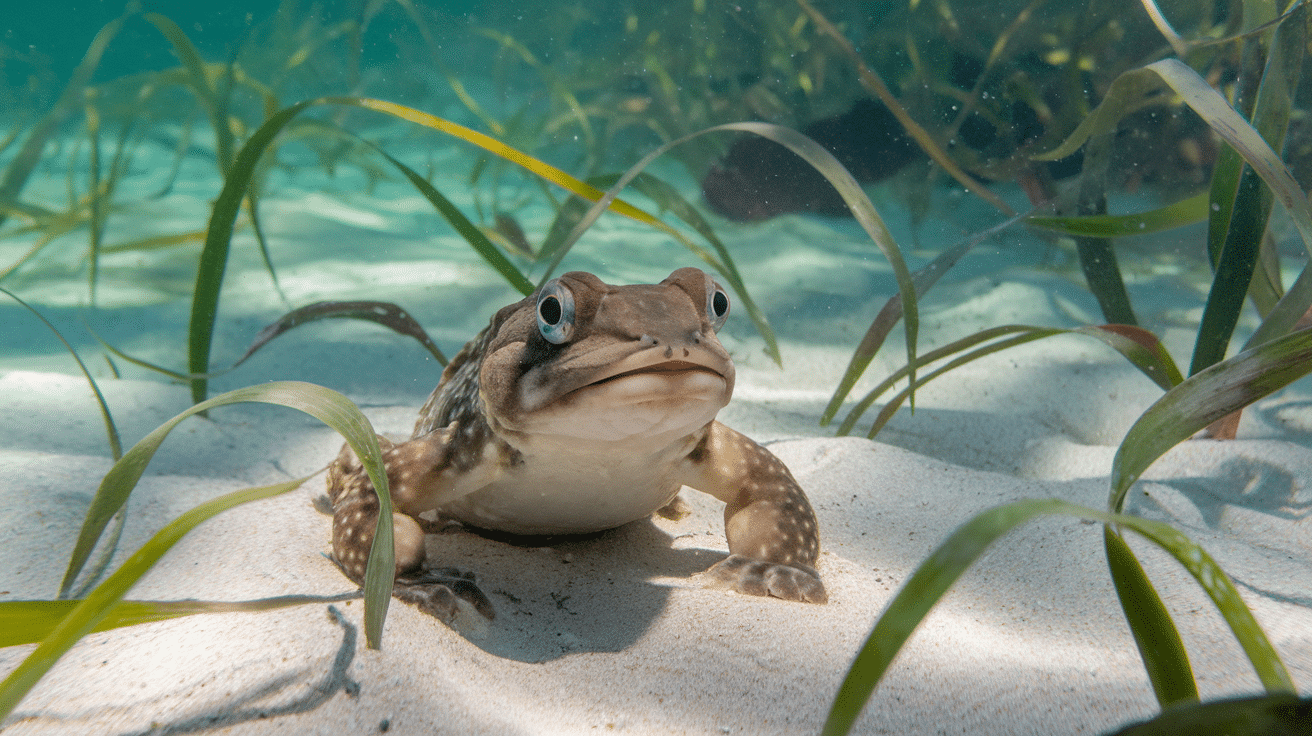
Toadfish are bottom-dwelling fish that are characterized by their wide, flattened heads and large, bloated bodies.
They are primarily found in shallow, coastal waters and often bury themselves in the sand to avoid predators.
Toadfish are known for their distinctive, grunting calls.
- Origin: Found in coastal areas worldwide.
- Habitat: Shallow, coastal waters, and estuaries.
- Scientific name: Opsanus (genus)
- Fun Facts: Toadfish are capable of making a grunting noise, which is produced by their swim bladder. They are also known for their ability to create “nests” in the sand.
21. Takin
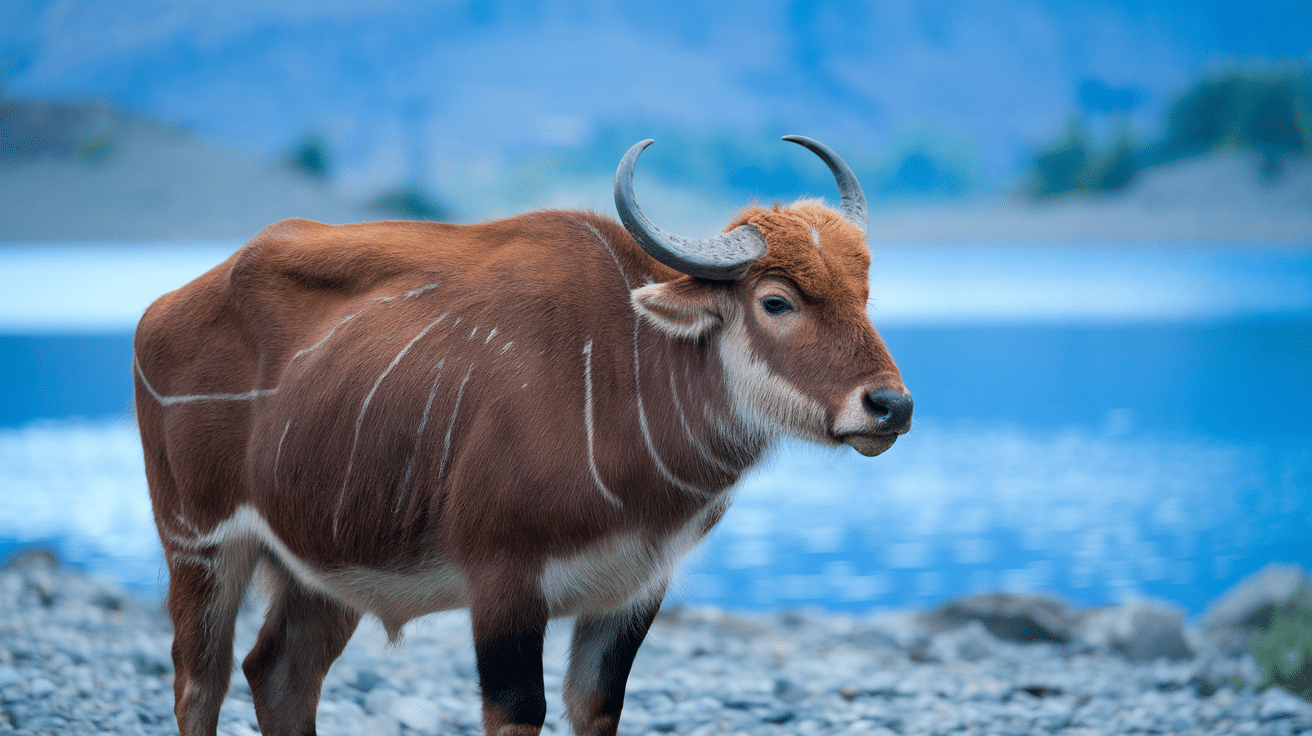
Takins are large, herbivorous mammals with sturdy builds and thick fur.
They have a distinctive, broad head and large, curved horns.
Takins are known for their excellent climbing abilities and can be found in rugged, mountainous regions.
- Origin: Native to the Himalayas and eastern Tibet.
- Habitat: Rocky slopes, alpine meadows, and forests.
- Scientific name: Budorcas taxicolor
- Fun Facts: Takins are capable of withstanding harsh winter conditions. Their thick coat helps them survive in cold environments, and they often live at altitudes of 10,000 feet or higher.
22. Totuava
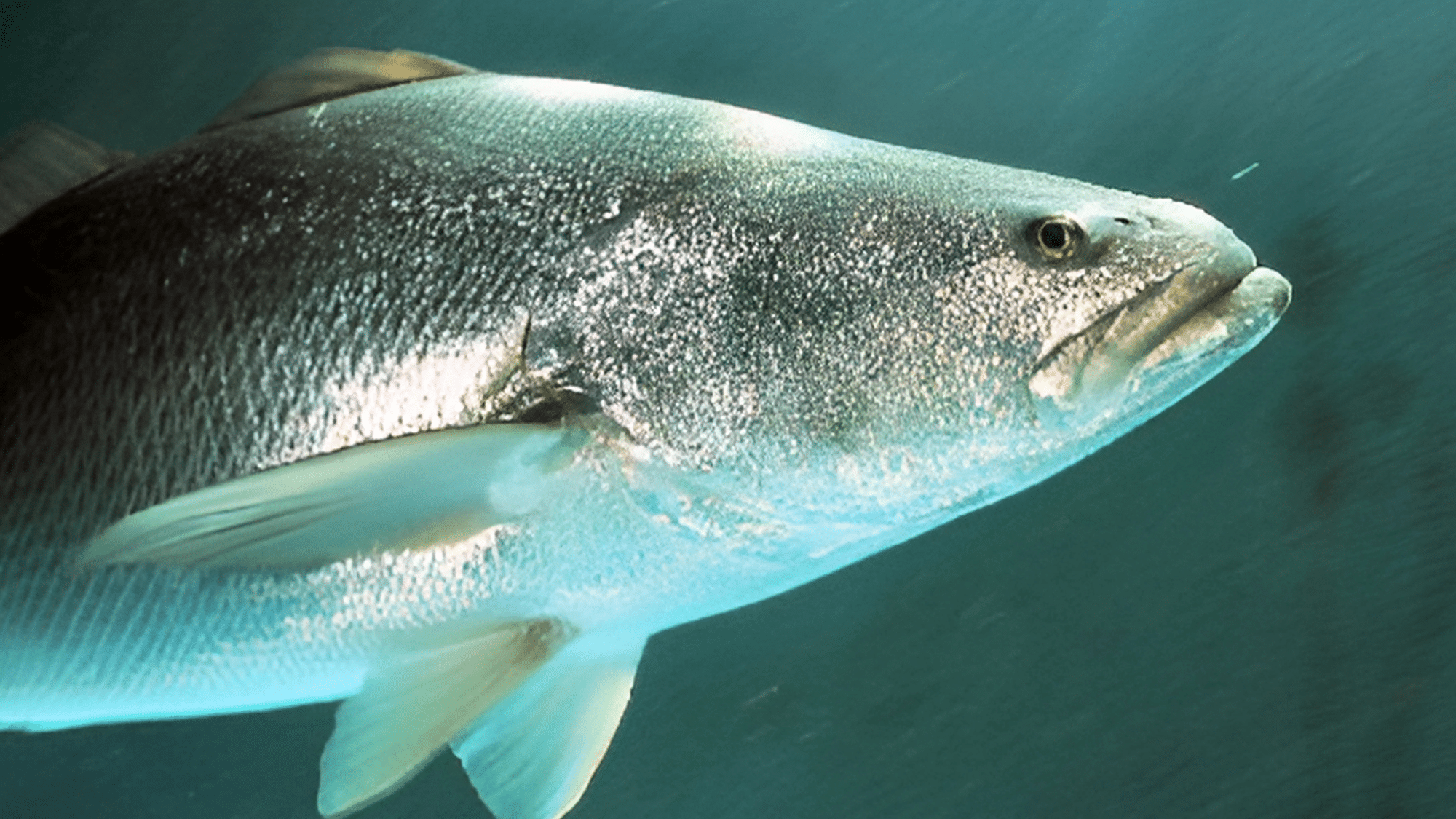
The totuava is a species of fish found in the waters of the Gulf of California.
It is known for its deep body and large size, with a significant commercial value in some areas.
Totuavas are primarily carnivorous, feeding on smaller fish and crustaceans.
- Origin: Native to the Gulf of California, Mexico.
- Habitat: Shallow coastal waters.
- Scientific name: Totoaba macdonaldi
- Fun Facts: Totuavas are known for their large size and are highly prized in Mexican cuisine, though they are endangered due to overfishing.
23. Tucan
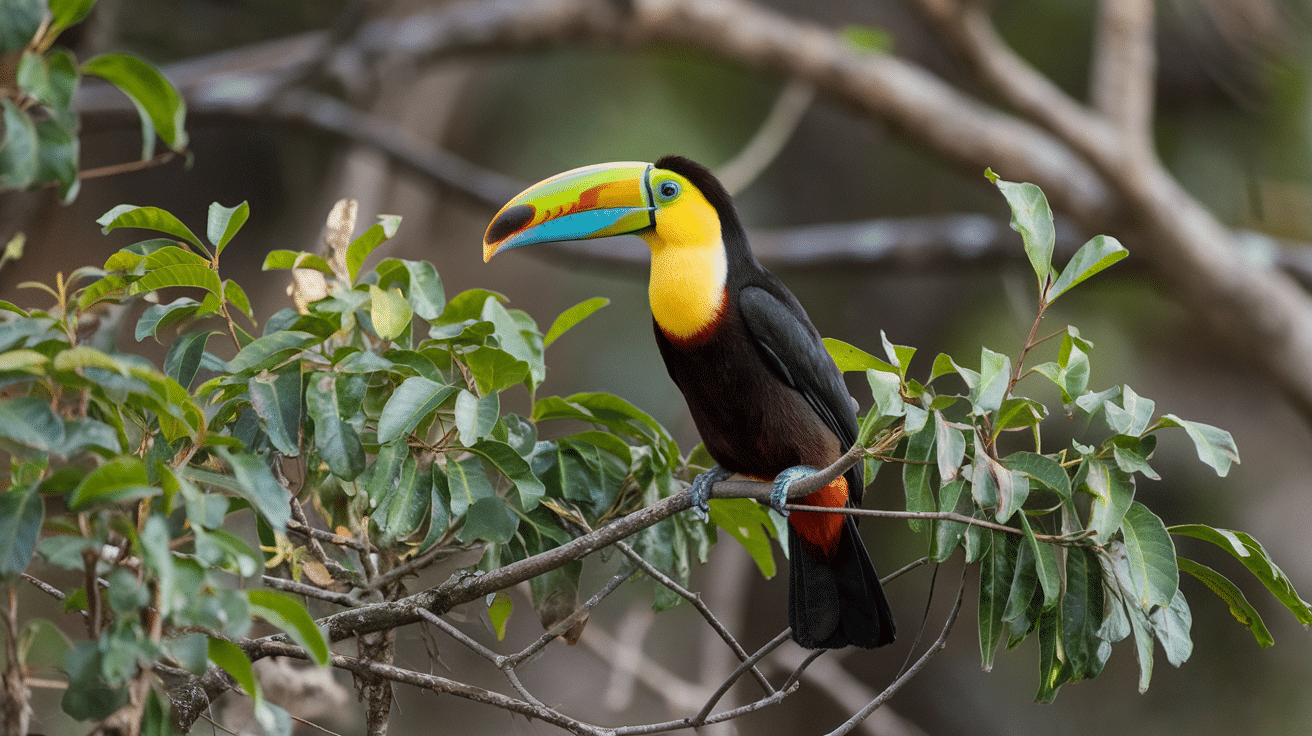
Toucans are large, colourful birds known for their oversized, brightly coloured beaks.
They are primarily frugivores, feeding on fruits, seeds, and small insects.
Toucans are social birds and often live in groups in tropical forests.
- Origin: Native to Central and South America.
- Habitat: Rainforests and tropical woodlands.
- Scientific name: Ramphastos (genus)
- Fun Facts: Despite their large beaks, toucans are light in weight because the beaks are hollow. They use their beaks to reach fruit on tall trees.
24. Turtle Dove
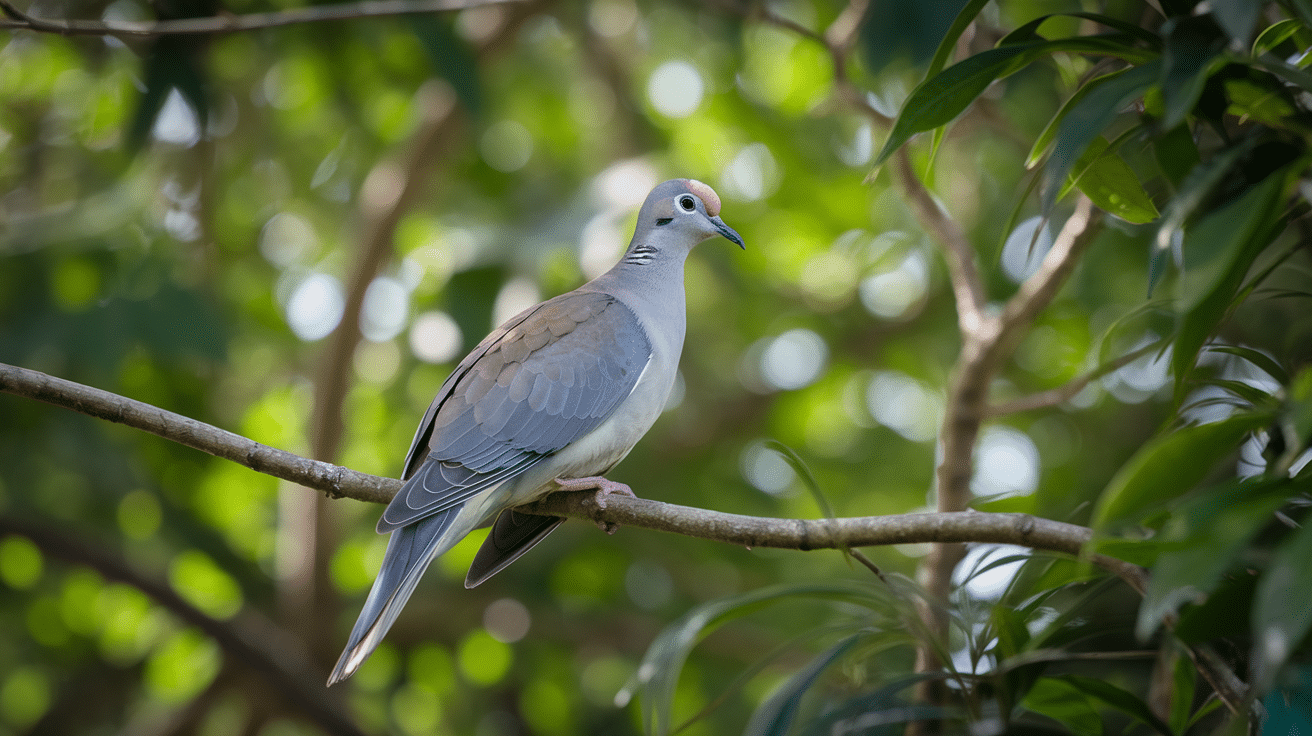
Turtle doves are small, migratory birds with soft plumage and a distinctive cooing call.
They are primarily seed-eaters and are often associated with peace symbols.
Turtle doves have strong migratory instincts and travel long distances during the winter.
- Origin: Native to Europe, Asia, and parts of North Africa.
- Habitat: Open woodlands, forests, and farmland.
- Scientific name: Streptopelia turtur
- Fun Facts: Turtle doves are known for their monogamous nature and often form lifelong pairs. They are also a symbol of peace and love.
25. Tropical Fish

Tropical fish are a diverse group of fish species commonly found in warm, shallow waters.
They come in a wide variety of colors and patterns, making them popular for aquarium enthusiasts.
Tropical fish species vary greatly in size and behavior.
- Origin: Found in tropical oceans worldwide.
- Habitat: Coral reefs, shallow coastal waters, and lagoons.
- Scientific name: Varies (multiple species)
- Fun Facts: Tropical fish can be either freshwater or saltwater species. Some species, like clownfish, have a symbiotic relationship with sea anemones.
26. Tropical Tortoise

Tropical tortoises are land-dwelling reptiles that are known for their hard, protective shells and slow-moving nature.
They are primarily herbivores and feed on grasses, fruits, and leaves.
Tropical tortoises are well-suited to warm, humid environments.
- Origin: Found in tropical regions worldwide.
- Habitat: Woodlands, grasslands, and coastal areas.
- Scientific name: Various species, such as Geochelone elegans
- Fun Facts: Tropical tortoises can live for several decades in the wild. Some species are capable of retracting their heads and limbs into their shells for protection.
27. Triceratops

Triceratops is a large, herbivorous dinosaur known for its three horns and large bony frill at the back of its head.
It is one of the most famous ceratopsids, which are a group of herbivorous dinosaurs.
Triceratops lived during the late Cretaceous period and are thought to have used their horns for defense and social interactions.
- Origin: Lived in North America during the late Cretaceous period.
- Habitat: Forested floodplains and river valleys.
- Scientific name: Triceratops horridus
- Fun Facts: Triceratops is one of the largest horned dinosaurs, with a frill that could reach up to 1 meter in length. It lived alongside other dinosaurs like the Tyrannosaurus rex.
28. Teal
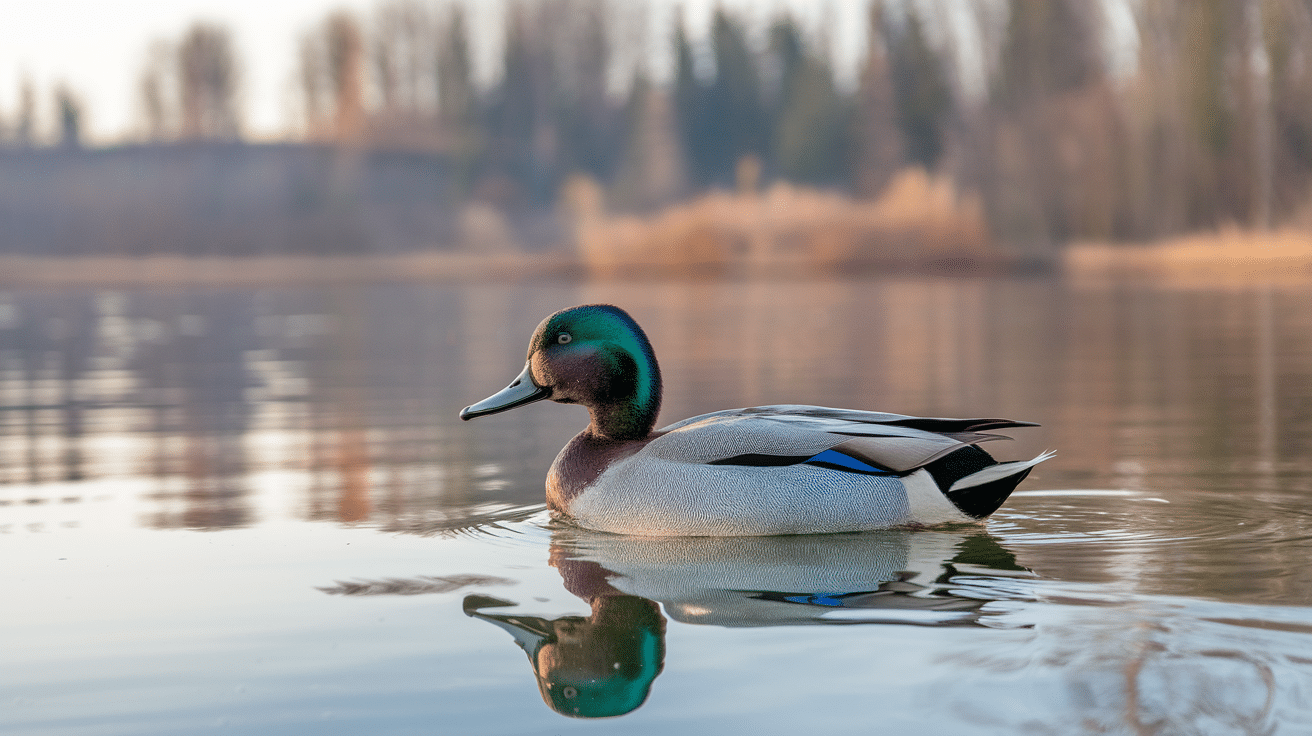
Teals are small ducks with a distinctive coloration, often featuring green and blue markings.
They are migratory birds, often found in wetlands and freshwater lakes.
Teals are known for their rapid flying and are often seen in small flocks.
- Origin: Found worldwide in temperate regions.
- Habitat: Wetlands, lakes, and marshes.
- Scientific name: Anas crecca (Green-winged teal)
- Fun Facts: Teals are among the smallest duck species and are known for their speed and agility in flight. Some species migrate over 2,000 miles each year.
29. Thresher Shark
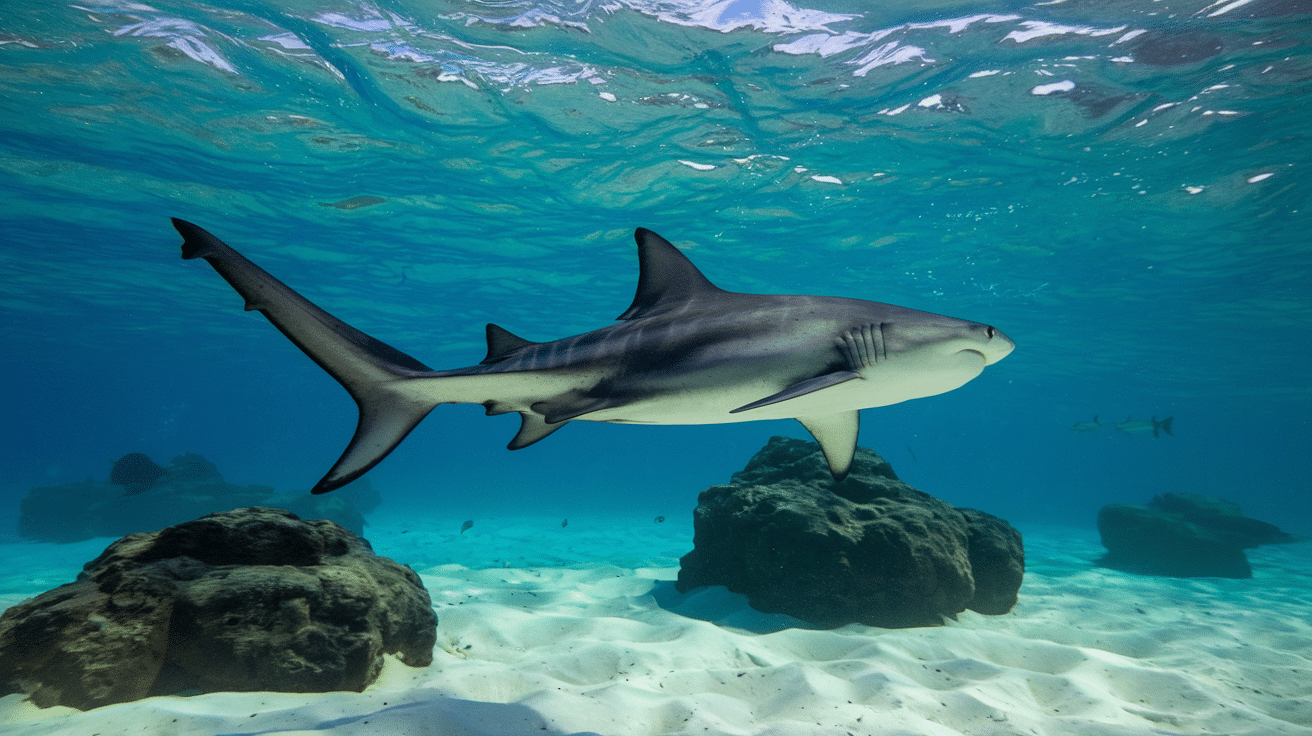
Thresher sharks are large, pelagic sharks known for their long, whip-like tails, which they use to stun prey.
They are solitary hunters, often hunting in deep waters or at the ocean’s surface.
Thresher sharks are efficient swimmers and can leap out of the water in spectacular displays.
- Origin: Found worldwide in temperate and tropical oceans.
- Habitat: Coastal waters, deep oceanic waters, and continental shelves.
- Scientific name: Alopias (genus)
- Fun Facts: Thresher sharks can grow up to 20 feet long, with their tails accounting for half their length. They are also known to leap out of the water while hunting.
30. Timber Rattlesnake
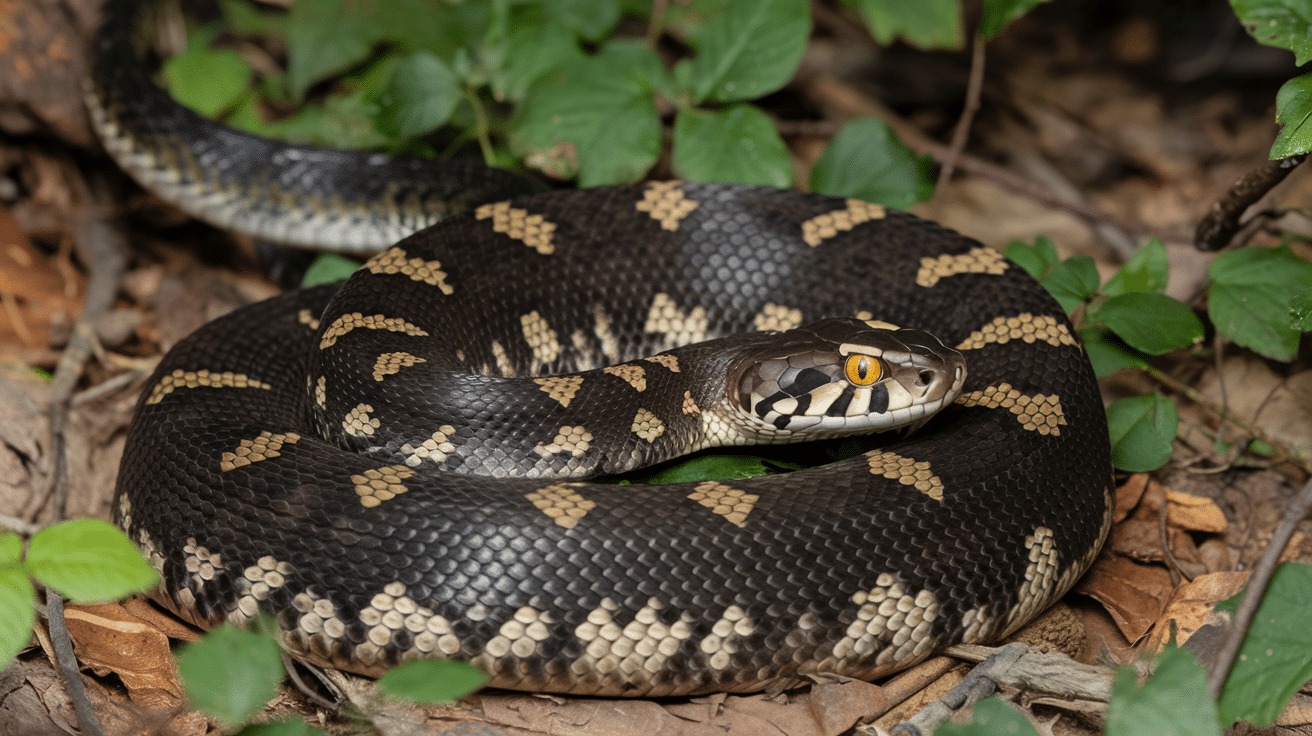
Timber rattlesnakes are venomous snakes known for their distinctive rattle on the tail, which they use to warn potential threats.
They have a triangular head and are typically found in wooded or forested areas.
Timber rattlesnakes are relatively slow-moving and rely on camouflage to avoid predators.
- Origin: Native to North America.
- Habitat: Forests, woodlands, and grasslands.
- Scientific name: Crotalus-horridus
- Fun Facts: Timber rattlesnakes have excellent camouflage, often blending into the forest floor. Their rattles are made of keratin and grow in segments every time they shed their skin.
Birds, Mammals, Reptiles, Insects, and Other Creatures
- Tawny Owl
- Trinidad Piping Guan
- Tropicbird
- Tawny Frogmouth
- Tommycod
- Tassel-eared Squirrel
- Tadpole
- Turkey Vulture
- Tawny Eagle
- Toco Toucan
- Timberwolf
- Tibetan Mastiff
- Thick-billed Murre
- Titi Monkey
- Tropical Sea Cucumber
- Tartare Tortoise
- Tasselworm
- Tarsier
- Tractor Beetle
- Thick-headed Flycatcher
- Tomcat
- Torpid Snakes
- Tamaraw
- Tessellated Geckos
- Tornillo Moth
- Tibetan Fox
- Thorny Devil
- Tadpole Shrimp
- Trinidadian Killifish
- Tuberose Moth
- Torosaurus (Extinct)
- Tidal Crab
- Thornbug
- Tree Shrew
- Timor Deer
- Troodon (Extinct)
- Tennessee Walking Horse
- Tamarind Tiger Moth
- Tana
- Tengu
- Thompson’s Lark
- Tegucigalpa Flying Frog
- Tardigrade
- Tui
- Tundra Swan
- Tassel-winged Parrot
- Tiger Moth
- Tri-colored Bat
- Tendraculus
- Titan Beetle
- Tree Spider
- Topaz Wing Butterfly
- Tomb Bat
- Tui Parrot
- Tusked Elephant Seal
- Tarantula Hawk Wasp
- Thumper Rabbit
- Troglodyte
- Tawny Redfish
- Tuckahoe
- Tawny Frogmouth
- Tree Bark Moth
- Trematode
- Takahē
- Teakettle Goby
- Twilight Owl
- Toco Bunting
- Tendecate
- Triphora
- Titanosaurus (Extinct)
- Tasmanian Tiger
- Troglodytes
- Thick-tailed Bushbaby
- Tegucigalpa Orchid
- Tanystropheus (Extinct)
- Tarantula Weaver
- Trompeteros
- Tucuman Macaw
- Tetra
- Tsinian
- Tapponis
- Thresher Fish
- Tetraodon
- Tehuelche Penguin
- Thecodontia (Extinct)
- Tanaka’s Earthworm
- Tasty Crab
- Tibetan Black Sheep
- Tengger Fox
- Tampico Beetle
- Turritopsis Dohrnii (Immortal Jellyfish)
- Trogon
- Tungara Frog
- Tungara Frog
- Triceratops Horns
- Tiny White Butterfly
- Turtle-frog
- Timber-Hall Salamander
- Tobin’s Moth
- Turtle-viper
- Tache Snake
- Tigris Tiger
- Tortorella Frog
- Timber Lizard
- Tailless Tree Frog
- Tiger Head Shark
- Titan-horned Tortoise
- Top Moth
- Tasmanian Wild Ox
- Tractor Snail
- Tyler’s Rhino
- Timberfrog
- Temblor Lizard
- Tennessee Panther
- Triton Conus
- Topaz-flanked Parrot
- Tadpoles of Lined Leaf-Fish
- Tibetan Roach
- Texan-raptor
- Tsumeb Rhino
- Tizona Lizard
- Tiliqua Lizard
- Turtle-mongoose
- Tenth Lizard
- Tropical Sea Frog
- Tangling-Serpent
- Tingler Hummingbird
- Tormented Whale
- Thyphobius Frog
- Trundling Zebra
- Tupida Mouse
- Tackler Trout
- Tupacane
- Trident Lizard
- Togo Tree Frog
- Timber-martin
- Tailhook Fish
- Toxic Goby
- Tuskegee Vulture
- Traphume
Conclusion
Animals starting with T show us the wonderful variety of life on Earth.
From small termites to large tigers, the animal kingdom is home to many remarkable creatures that start with the letter T.
We’ve learned about their special looks, incredible skills, and surprising behaviors.
Whether they live in the ocean, on land, or in the air, T animals have important jobs in the places they live. Some are strong hunters, while others may be tiny but mighty.
Next time you spot a toucan, tortoise, or tarantula, think about the neat facts you learned about them here.
The world of animals that start with T is varied and fun to explore.
Keep finding out about the marvels of wildlife, one letter at a time!















